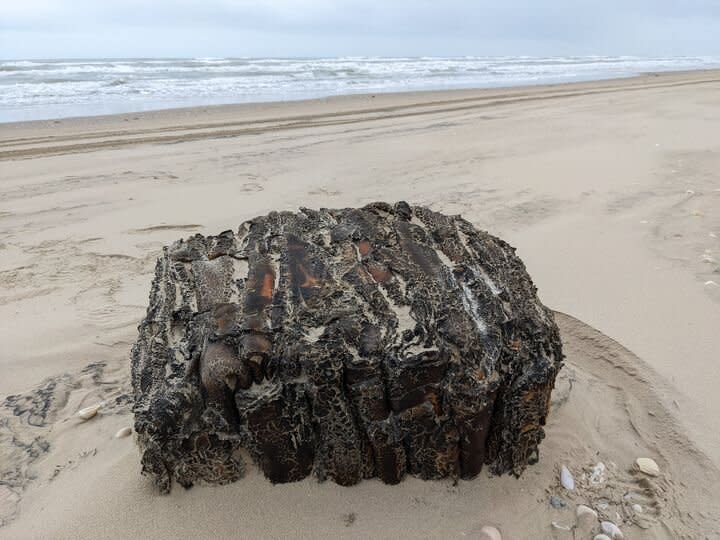WWII Cargo From Sunken German Warship Washing Up in Texas Nearly 80 Years Later

Padre Island National Seashore
Nesting sea turtles aren't the only thing coming ashore on Padre Island. Mysterious rubber bales are also washing up on Texas beaches.
Padre Island National Seashore recently took to Facebook to explain the surprising origin of the decaying objects that have been appearing on Gulf beaches since 2020. According to the national park, the bales were on a German ship sunk by the U.S. off Brazil's coast during World War II.
"Rubber bales like this one started washing up on Texas and Florida beaches in 2020, but before that, they were washing up on beaches in Brazil," Padre Island National Seashore wrote alongside a photo of one of the bales.
The post goes on to explain that in January 1944, the SS Rio Grande, a German blockade runner, was carrying tin, copper, cobalt, and crude rubber bales when it was spotted by the USS Omaha and USS Jouett off the coast of Brazil.
"Realizing that they had been spotted, the crew of the Rio Grande abandoned the ship and its cargo after purposely trying to sink (ie scuttle) it," the seashore explained. "The Omaha and Jouett fired on the Rio Grande until it sank, sending all its cargo to the ocean bottom where it was resting until recently."
WATCH: Dog surfs with kids who need machines to breathe
So, how did rubber bales weighing close to 200 pounds make their way from Brazil to Texas?
"As the SS Rio Grande started to break up, the waterlogged rubber bales floated up from the ocean bottom and into the North Brazil current," the post continued. "From there, the bales stayed afloat in series of northbound currents along the coast of South and Central America, around the Yucatan and then finally into the Gulf of Mexico."
There you have it, folks!

